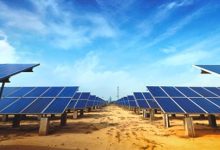Developers of utility-scale solar farms are now looking to downsize their proposed solar projects in order to dodge the increasingly complex and costly connection requirements imposed by Australian regulators.
Solar projects of 5MW or under can be popular for a variety of reasons – they are within the financial reach of local councils looking for a renewable energy supply, can deliver to local businesses and can fit into a relatively small area. They have become the flavour of the month in states such as South Australia, where Flow Power is building several to service the needs of corporate customers like S.A. Water and the City of Adelaide.
It is often said that bigger projects offer bigger savings through scale and can deliver lower cost power, but small projects in Australia are also not subject to the same tough regulations that have afflicted, and caused lengthy delays, and added costs to many larger scale solar (and wind) projects. And that is becoming an attractive option to many developers.
US based solar power developer VivoPower has revealed that it is deliberately downscaling one of its projects in Australia precisely to dodge the connection issues.
It has a pipeline of 50MW of smaller solar projects, which it hopes to grow to 100MW by the end of the year, but is now looking at breaking one of its largest projects, the 15MW Yoogali solar project, near Griffith in NSW which it has been trying to get underway since mid 2018, into smaller parcels.
“The approval timing was delayed from original estimates due to an increasingly rigorous Australian regulatory approval process for projects over 5MW in size,” Vivo says in a recent stock exchange filing in the US accompanying its annual results.
“This increased scrutiny is being driven by the number of new solar projects coming on-line in certain areas of Australia resulting in network stability issues and causing delays to new project approval.
“Projects under 5MW are not subject to the same approval process and, at present, are not experiencing the same delays as larger projects. Accordingly, we are examining the options available to accelerate Yoogali through downsizing or division of the solar farm into smaller projects.”
Vivo says the 5MW Daisy Hill Solar Farm, near Hillston, is under development and is expected to complete development and connection approval in coming months.
Vivo is pursuing solar power in Australia partly because it sees good returns from their development, partly because it can deliver work to its local EPC contracting offshoot J.A. Martin, and partly because it sees huge demand from investors,
“The current regulatory environment for approval of larger grid-connected projects has resulted in a strategic realignment to focus on sub-5MW and customer-connected (behind-the-meter) commercial and industrial projects where there is greater certainty regarding the development, timing, and delivery process,” it says.
“We believe there is substantial opportunity in this market and that both through our network within the solar industry and by leveraging the portfolio of large commercial and industrial clients available through J.A. Martin and Kenshaw, the focus of our business will shift increasingly to this segment of the market.”
Vivo landed its initial portfolio through a deal with ITP, under which Vivo funds up to 1.4 cents per watt (AC) of development costs per project in exchange for a 60 per cent equity stake in each project, with an opportunity to achieve a sale and transfer at multiple stages, as early as shovel-ready.
The projects may be developed on a merchant basis, while also offering excellent opportunities for corporate or municipal offsite power purchase agreements to be sought on an opportunistic basis during the development period.
In October 2019, Vivo sold a portfolio of 53 operating solar projects – mostly on commercial and industrial sites and totalling 1.6MW – for US$1.1 million. It says the sale represented a 2.0x multiple of invested capital and an unlevered IRR of 20.1% before tax.
“The challenges in connection new solar projects to the Australian electricity grid at present (are) due to regulatory bureaucracy and policy,” it notes in an accompanying presentation to analysts.
“Conversely, behind-the-meter solar installations for industrial customers are forecast to boom over the next decade-plus as large energy users continue to face rising electricity costs and pressure to meet aggressive climate goals.
“Customer-sited projects do not face the same network-related risks as utility-scale projects, offer greater savings to customers, and can be developed and built in much shorter time frames.”









